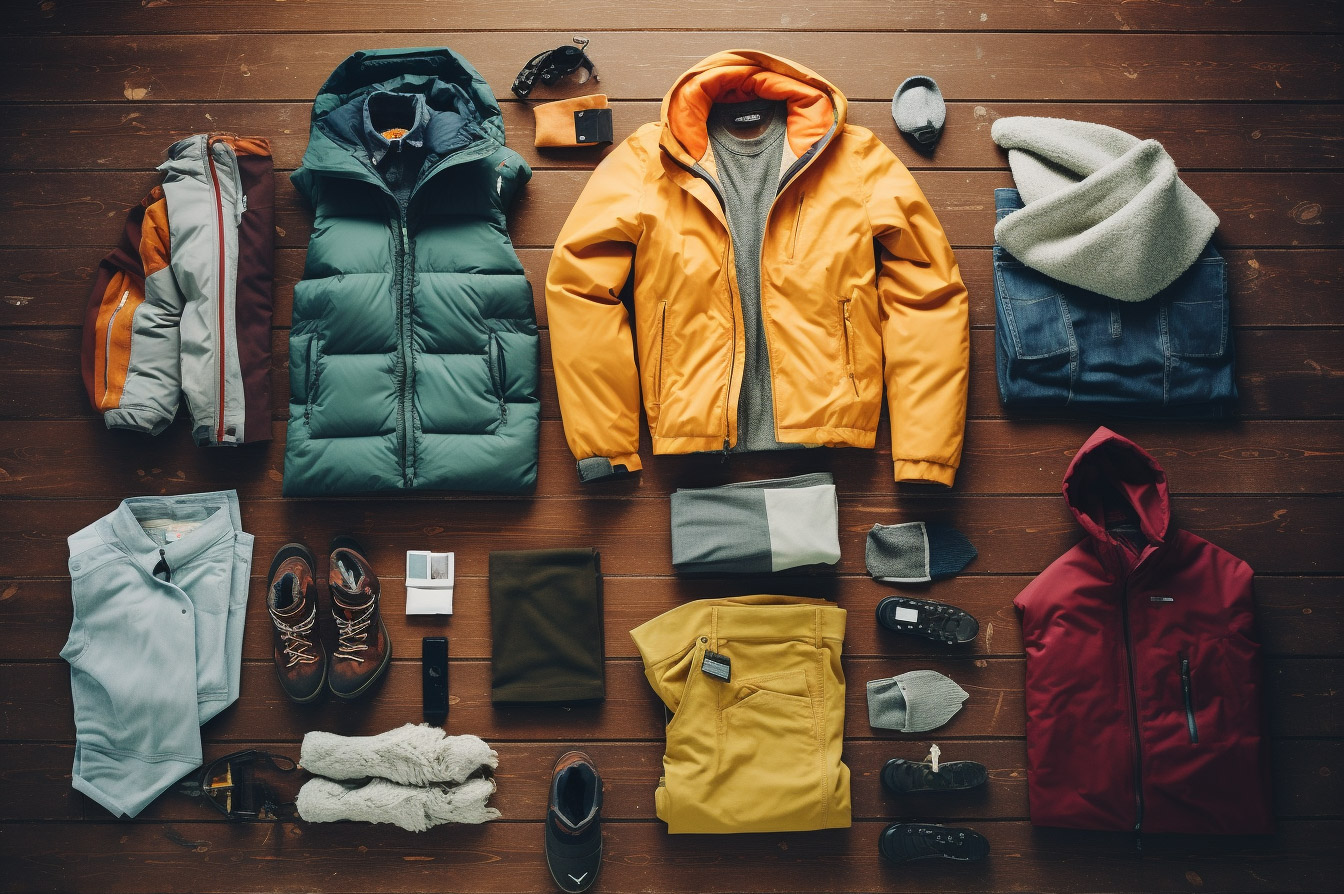
Get your wardrobe ready for a wet, cold winter
Get ready: Experts predict that the South and Southwest might get drenched this year
By Abbie Kopf
October 13, 2023
Bad news, warm weather lovers. El Niño, the weather pattern that brought hotter-than-hot summers will likely cause colder, wetter winters throughout the South and Southwest, according to predictions by experts. As the jet stream shifts south, more precipitation combines with cooler weather to increase the chances of freezing rain, sleet, snow and ice.
The good news? While we can’t predict the weather, we can certainly get ready for it. Having the right gear and apparel can make a world of difference when fighting against Mother Nature. Here are a few helpful tips for staying warm, dry and (relatively) happy during a doozy of a season.
Layer up
Layers are crucial for a few reasons. First, each layer has a different job. Base layers are excellent at retaining your body heat, for instance, while shells can help protect against wind and moisture. Additionally, layers are key because they help you regulate. Have you ever transitioned from a cold exterior to a warm interior and feel as if your body is made of molten lava? Layers help you easily add and remove to help you regulate your body temperature to avoid extremes.
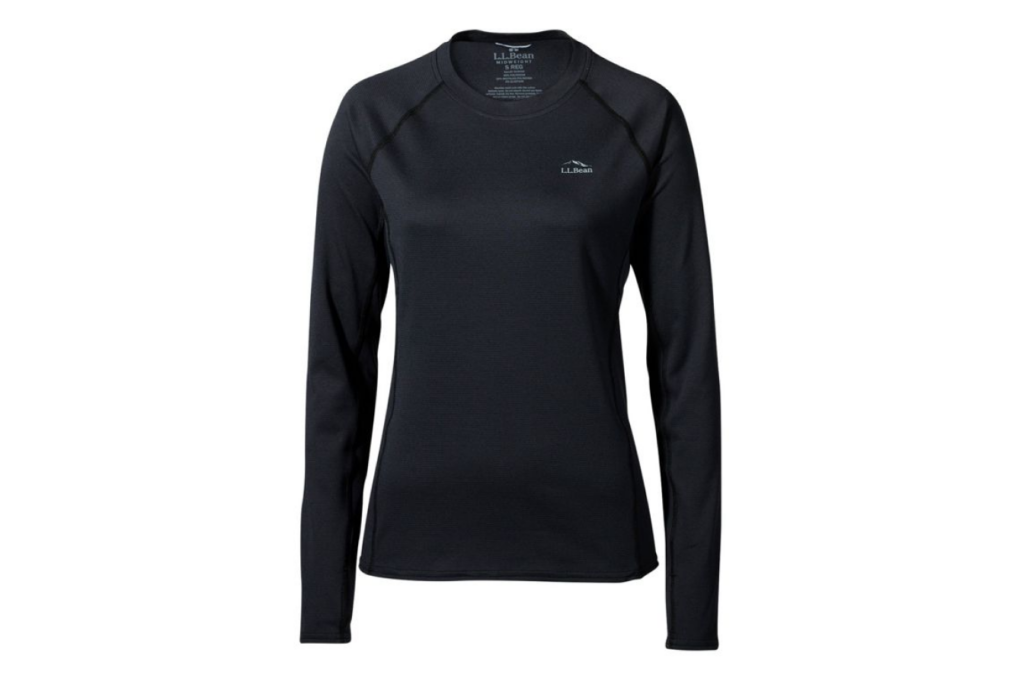
Base layers
All layers come in different weights — lightweight, mid-weight and heavy-weight. Unless you are spending a lot of time in severe cold (or are fearful of electricity blackouts), residents of Southern states can typically go with something lighter weight in a synthetic or wool material. Make sure to get both tops and bottoms, and don’t be surprised by a substantial price tag. These items will last, and play a pivotal role in keeping you warm, so it’s worth splurging.
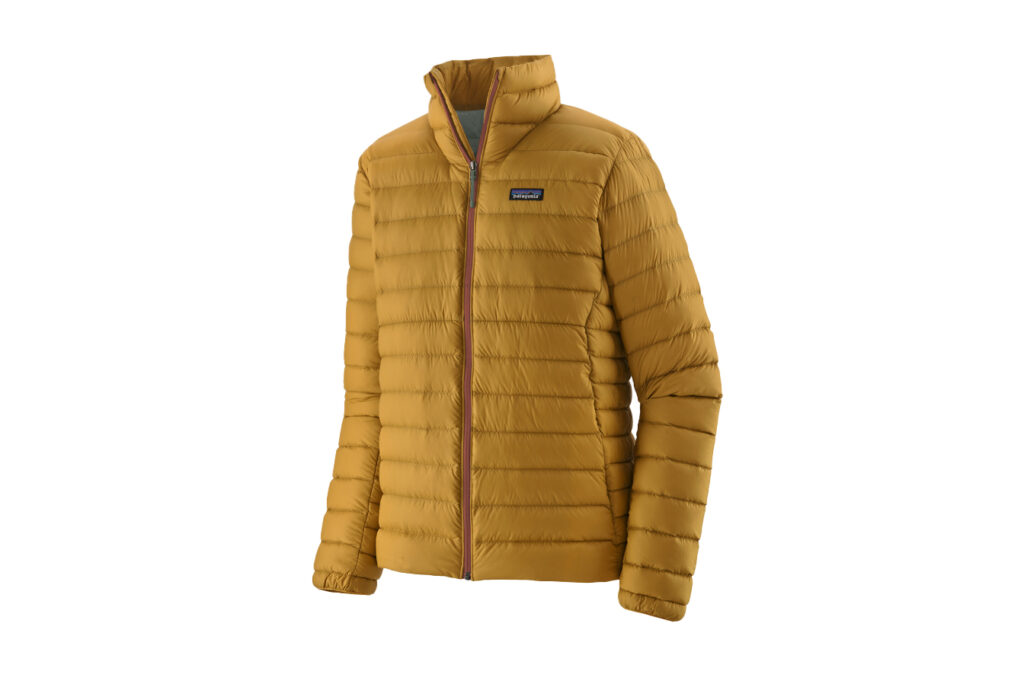
Mid layer
Next up, you’ll want to create a warm bridge between layers with a fleece or down sweater to keep that precious core heat. Most down sweaters are organized by “fill power” — the measure of the quantity and quality of the down material — and temperature rating. Again, if you aren’t hiking to a mountaintop during a snowstorm, the standard offering will likely get the job done.
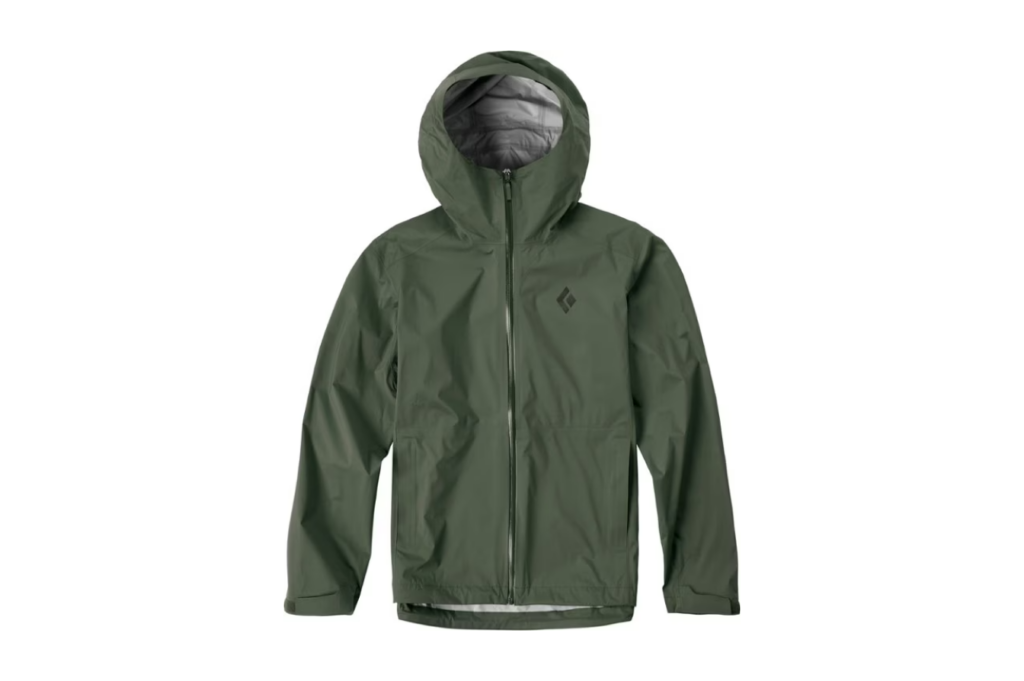
Outer layer
When finding the perfect outerwear, you’re looking for a layer that is resistant to wind and precipitation. Most big retailers use some sort of synthetic material — GORE-TEX being the most popular — that will keep you dry with proper ventilation. While a jacket is the most important component, if you plan to be outdoors this winter, a pair of waterproof pants can go a long way.
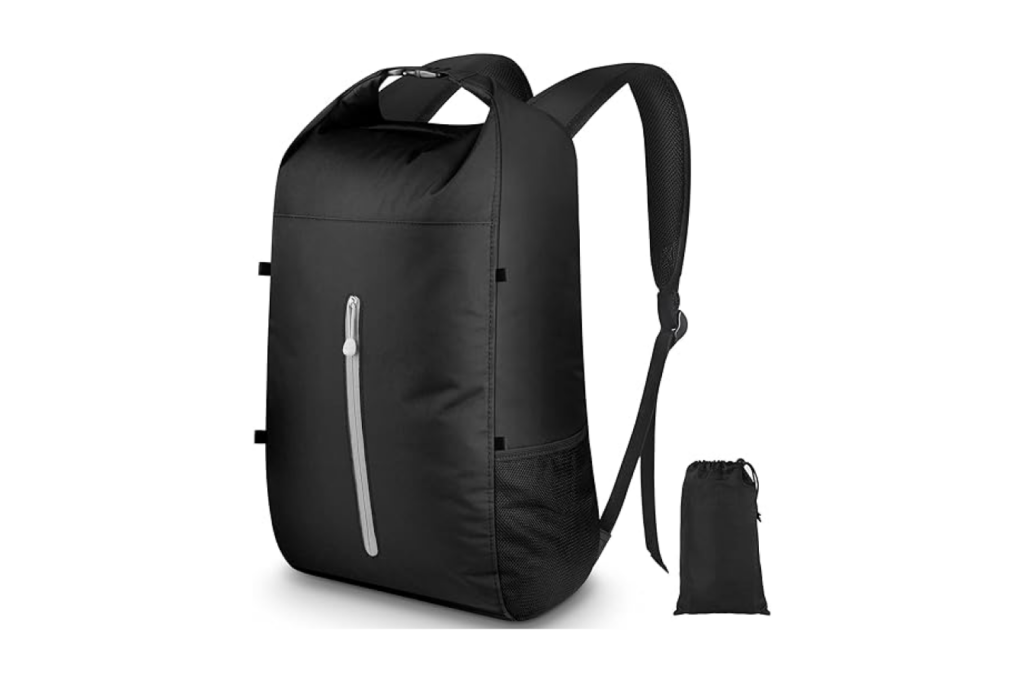
Waterproof your body and belongings
We’ve already discussed the importance of a water-resistant shell, but don’t stop there. Your cold-weather uniform should include a sturdy, all-weather boot that repels water.
Traditional rain boots mostly use rubber to keep out precipitation, but that won’t necessarily improve overall warmth. Water-resistant hiking boots are often insulated with down, wool, fleece or synthetic materials, and will include a shell with leather, GORE-TEX or other water-wicking materials.
Pair these with a solid wool sock which can help keep moisture at bay. Don’t forget your mitts — water-resistant gloves (or mittens, for colder temperatures) will help keep your fingers warm and dry.
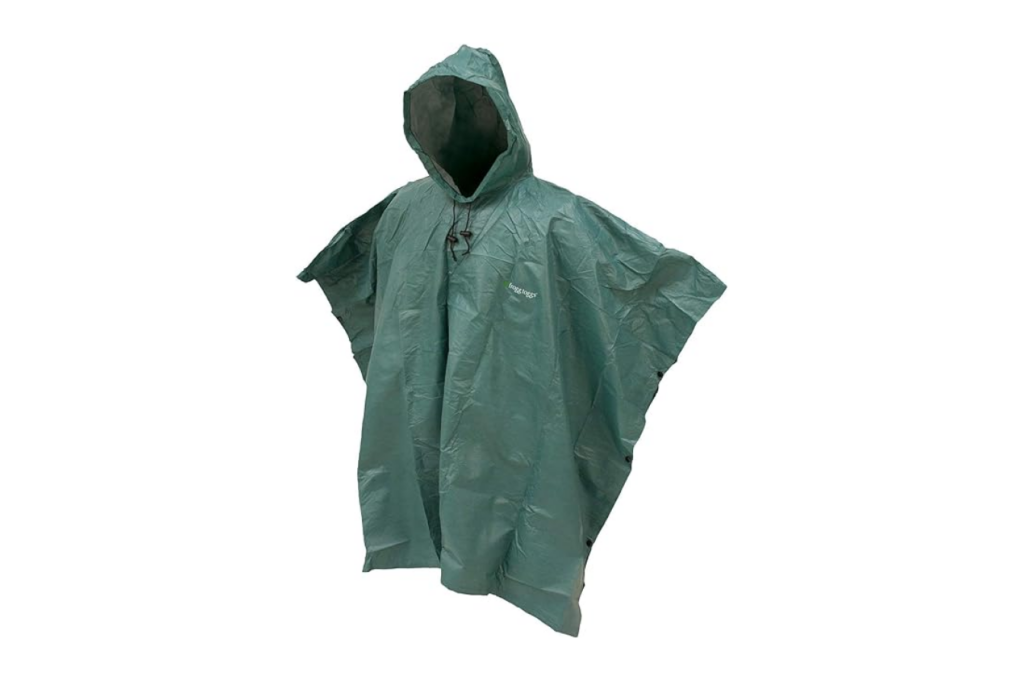
Stay covered
Though umbrellas are a conventional, sometimes controversial choice to shield yourself from rain, sleet and snow, there are numerous ways to keep you covered, head-to-toe. Consider a rain hat with a wide brim to keep raindrops from falling on your head (and face.) Pair it with a poncho, raincoat or even a rain suit if you’re feeling an outdoor adventure. Make sure that whatever you’re wearing, the rain can’t seep into your pants legs — go wide to fit over your boots for the best protection.
Though it’s important to keep your body covered, don’t forget about your belongings. A dry sack or waterproof backpack can help keep items dry, which is especially important when it comes to electronics. All the rice in the world can’t help dry out a smartphone soaked in a downpour.
Know the fabric do’s and don’ts
First off: stay away from materials like denim or cotton. While cotton is great for warmer weather, it is a terrible and even dangerous choice during cold, wet weather since it traps moisture next to the body. This winter, opt for materials that are designed to stand up to the elements.
Wool is an excellent material for staying warm — unfortunately, it is also prone to absorb moisture and can very quickly turn heavy and cumbersome. While it’s a perfectly acceptable choice for brisk, sunny days, turn to synthetic materials to stay dry during wet streaks.
Most outdoor and athletic companies will offer a wide range of waterproof and water-resistant materials that have been rigorously tested, optimized and improved to provide light, packable, quality materials at a variety of price points.
Though this season may be more extreme than usual, the right cold-weather uniform will keep you insulated from the elements so that — rain or shine — you are ready for whatever comes your way.
Whether you’re a shopaholic or shopaphobic, sign up for the Localite newsletter to narrow down the best products for any time of year.
Share this article

Create a “dopamine zone” for hits of joy right inside your home
Create a space for items that make you happy — and visit it often
The national mood can optimistically be characterized as Not Fantastic. Perhaps this is why interior design trends have increasingly embraced go-big, feel-good maximalism, with bright colors and unabashed personality taking the place of grey and beige from ceiling to floor.
Integrating bits of joy is sometimes called dopamine design — and the best part about it is that it’s easy and cheap, with a little intention. Designate areas in your home as your “dopamine zones” – or spaces that you look at often that are dedicated to showcasing the design that gives your mood a boost.
Step one: Make a list of items that make you happy on sight
Dopamine design is all about what brings you feelings of delight. Though this can take any shape or form, try to think through items that immediately give you a rush of satisfaction just by looking at them. Don’t worry if the items themselves aren’t design-ready — an eclectic, personal mix will only add to the charm of your dopamine zone. You can integrate any category that speaks to you, like:
- Memories: Pictures with loved ones, concert tickets, mementos from trips, gifts from friends
- Identity: Art of your favorite movies, pictures of people that you admire, books that you love, framed quotes, pottery you’ve made
- Fun: Cute trinkets or prints, oddball items (like that frog ashtray you found at the thrift store)
- Mood: Candles, essential oils, plants, record player/records or Bluetooth speaker, aroma diffuser, tarot cards, candy bowl
Step Two: Display them creatively
Once you’ve collected your feel-good pile, display them throughout your home on surfaces, storage spaces and décor. Here are a few of our favorite ways to display the things that bring a smile to our face.

Floating Display Shelf
For lighter items like pictures and small plants, consider an affordable, sturdy hanging shelf. You can easily snag one between $25- $50 — just make sure your displayed items fall below the maximum weight listed in the product description. Hang the shelf at eye level in your living room or bedroom. If you hang somewhere like the kitchen or the bathroom, just make sure that your shelves won’t get splash-back from showers, sinks, etc.
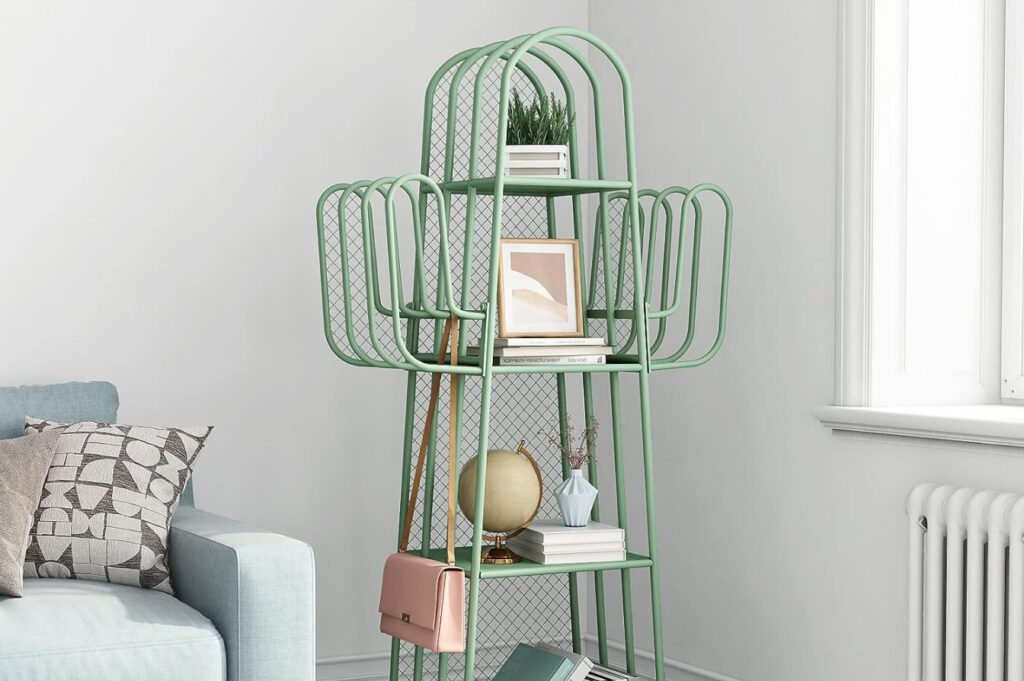
Bookshelf
Standing or built-in bookshelves are ideal for heavier items, like weighty frames, hard-cover books, ceramics, sculptures and large decorative items. Though bookshelves of yore were often straightforward, rectangular boxes, you can find a wide range of shelves that can accommodate your personality, like this adorable cactus. When arranging the shelf, make sure to include items of various sizes, shapes and weights to create a good visual balance.
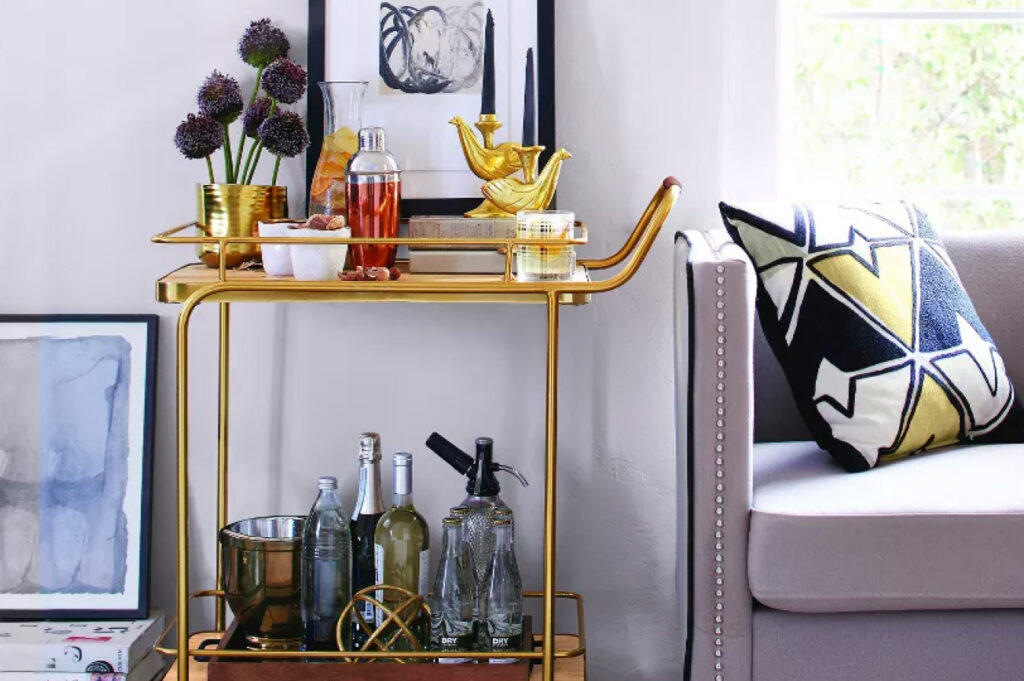
Bar Cart
Bar carts aren’t just for bottles and drinkware. In fact, these rolling storage spaces are often ideal for placing mementos that will add even more joy than your next cocktail. Have a great photo from girls’ night out? Want to feature your favorite print? Need a place for your grandma’s vintage plates? Think of the bar cart as your own personal Cheers, the place where you go when you need a shot of happiness, in alcohol form or otherwise.
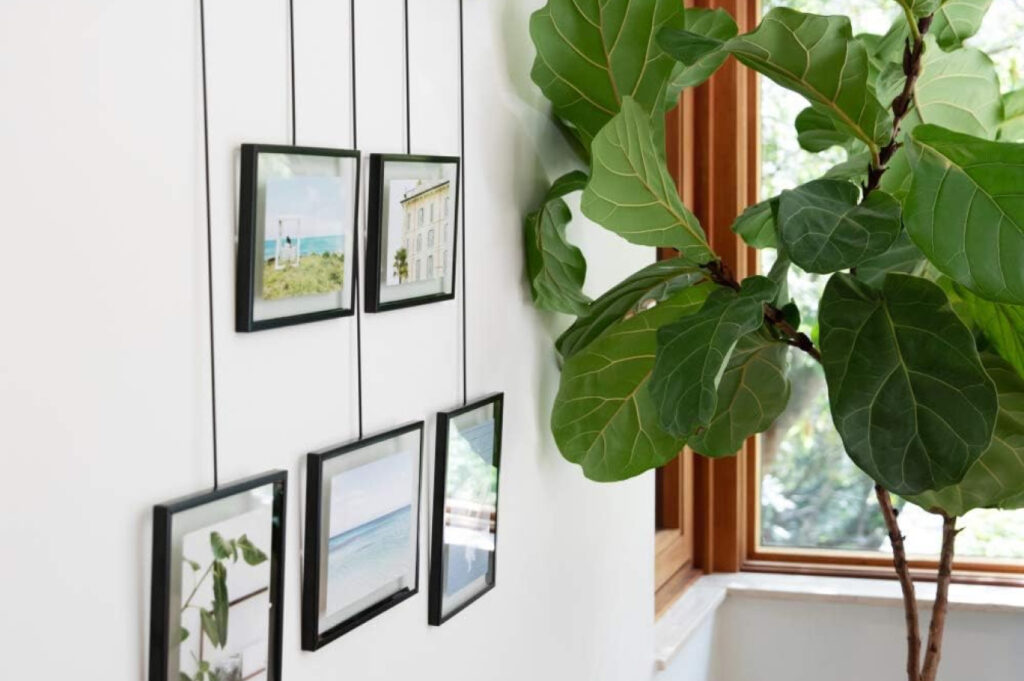
Gallery Wall
Okay, this one is controversial. Though some are vehemently anti-gallery-wall, the design has endured for years and is still an excellent way to showcase what you love. While traditional paintings and pictures are the natural choice, you can also include tickets, programs, drawings, menus or other outside-the-box keepsakes from the best moments in your life. Opt for a package with various sizes and customizable mattes, or collect frames as you go at your favorite secondhand shops.
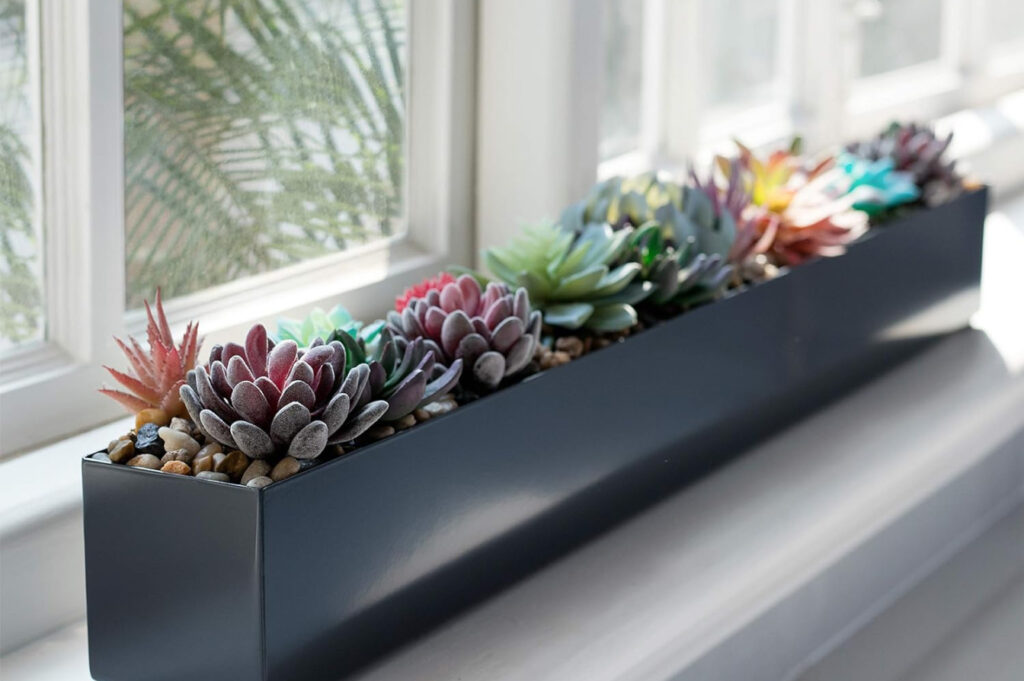
Windowsills and balconies
Even when you can’t get outside to enjoy nature, you can get a dose of the outdoors through your window or on your balcony. Though the most natural items to store here are your (light-loving) plants, you can also keep anything here that helps you get some perspective. This is the perfect place for an aroma diffuser that smells like the season, fruit bowls or even blankets and pillows to create a cozy nook. (Just don’t store mirrors, electronics or other items that react to sunlight.) Consider these spaces a connection between your sanctuary and the world outside.
Want more ideas to make your home a little happier? Sign up for the Localite newsletter.
Share this article
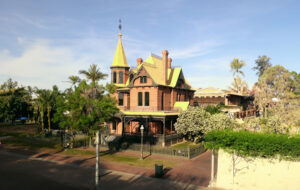
Explore these haunted Phoenix sites on your next date night
7 historic haunted places that will bring you closer together
Phoenix as we know it today, with its modern skyscrapers, sprawling swaths of planned communities, acres of industrial complexes and perpetually sunny skies, may not immediately conjure images of spooky specters and mythical monsters. But the state’s capital has a rich history filled with Wild West outlaws, pesky poltergeists and tragic tales of murder and misfortune.
While the Halloween season sees the appearance of plenty of bone-chilling theme attractions that require expensive tickets for only a few minutes of fabricated fear, the Valley of the Sun also offers plenty of supernatural settings and paranormal hotspots that are guaranteed to induce hair-raising thrills and chills. Here are some of the best spots in Greater Phoenix for frightful fun with your favorite, erm, boo.
1. Central Phoenix
Rosson House
Based on appearances alone, if any building in Phoenix is guaranteed to harbor ghostly apparitions, it is the historic Rosson House, with its gingerbread trim, ornamental ironwork and golden witch’s hat turret. Built in 1895, the opulent Queen Anne Victorian-style mansion reportedly has been haunted since 1981, when the museum’s caretaker was fatally shot on the grounds. Visitors and staff have reported seeing unusual shadows and hearing phantom footsteps, experiencing doors locking and unlocking on their own, and feeling heat from an unused fireplace.
Communicate with the caretaker — or others in the spiritual realm — during a Séances & Spiritualists Tour. The inherently spooky attempts to contact the dead were a popular pastime during the Victorian era. For a more modern celebration, Halloween at Rosson House promises a fun-filled evening full of candy and costumes that’s perfect for a first date or a family outing.
The Stockyards
For the ultimate frightful feast, head to the restaurant the Food Network named the most haunted in the state. Just don’t be surprised to find an extra guest at your table.
Part of an actual stockyard and slaughterhouse in the early 1900s, The Stockyards originally was built to feed the workers. In 1947, the steakhouse officially opened and quickly gained a reputation for serving delicious Western-inspired cuisine — and for spooky encounters. Helen Tovrea, wife of the first owner is said to still haunt the property. Some guests have seen a woman in red reflected in the bar mirror. Others tell stories of disembodied voices, footsteps, and dishes and paintings that move on their own. If you go, sit near the mural that showcases a woman in a red dress, said to be Tovrea, and perhaps she will join you for a drink.
Orpheum Theater
For more spine-tingling entertainment, head to one of the most haunted buildings in downtown Phoenix. Built in 1929, the Orpheum Theatre is no stranger to ghostly guests and supernatural shenanigans. Four spirits, including ones of original owner Harry Nace and a purring panther-sized feline, are said to haunt the former Vaudeville venue. The most famous is a little girl named Maddie. She has been known to bop audience members on the head, shush them during performances and even photobomb unsuspecting selfie-takers. Enjoy a first-class performance or classic movie or join in on a haunted tour and learn more about the true phantoms of this opera house.
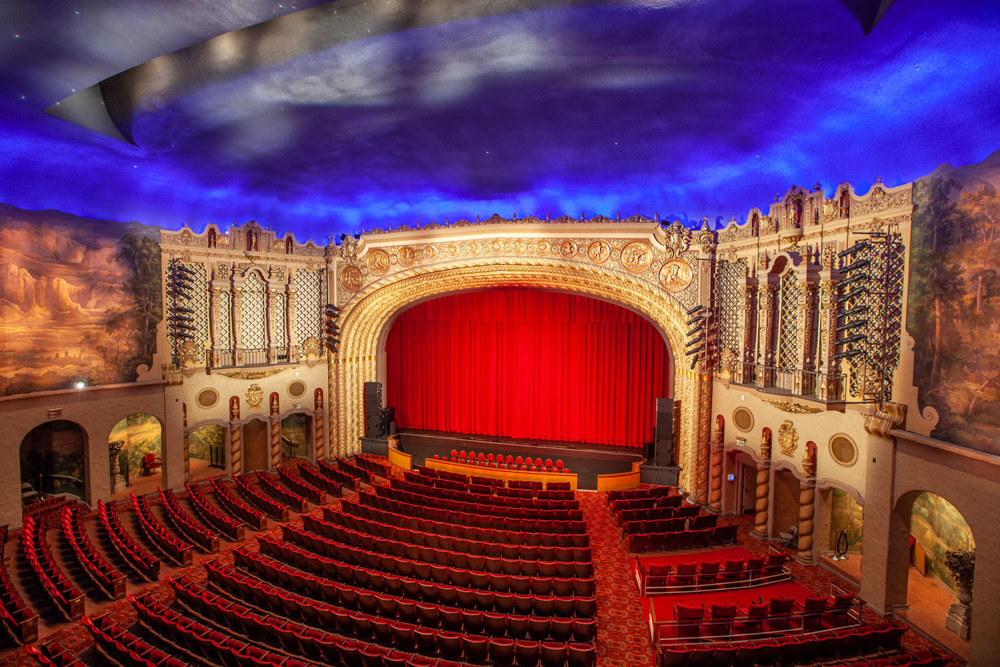
San Carlos Hotel
As the curtains close on your night of eerie adventures, check in to the San Carlos Hotel. This historic boutique property was a frequent go-to for the elite of Hollywood’s Golden Age, including Clark Gable, Mae West and Marilyn Monroe. But some guests never checked out.
The spirit of a young woman named Leone Jensen who jumped off the roof just weeks after the hotel opened in 1928 is said to still roam the rooms. Her final accommodation, Room 720, is particularly popular with ghost hunters. Hotel guests report visions of a woman in white standing near their bed, lights turning on and off on their own, and laughing and crying children in the hallways. Sleep well.
2. Tempe
Casey Moore’s Oyster House
Located in the early 1900s former home of William and Mary Moeur, this Irish eatery known for its seafood and beer selection is a longtime favorite of Arizona State University students and Tempe locals alike — and of its original owners. The spectral shapes of the Moeurs have been seen floating up the stairs and dancing on the second floor long after the restaurant has closed.
Other spirits aren’t as content. In the 1940s, the property is believed to have been a bordello, and one young woman named Sarah, who is said to have been strangled by a jealous lover, remains onsite, haunting the restaurant as a poltergeist. Diners have noted hearing disembodied whispers, forks flying off tables, and pictures falling off walls. Will the ghosts you meet be delightful or disruptive? Down some brews and find out.
Four Peaks Brewing Co.
Your terror tour of Tempe continues with a haunted brewery tour at Four Peaks Brewing Co. Housed in a former creamery that dates to the late 1800s, the brewery is known as much for its ghosts as it is for its namesake craft beer.
Since it first opened in 1997, the brewpub has been the site of strange and mysterious happenings. From ghostly apparitions to weird noises and missing equipment, the presence of unknown supernatural forces is undeniable. Nightly ghost tours share the history of the property, from early workers whose spirits have never left, to a nearby tragic train crash in 1898 that still echoes throughout its walls.
3. Paradise Valley
Lon’s
Alonzo “Lon” Megargee was one of the Valley’s most renowned cowboy artists. His former home, an adobe one-room studio on 6 acres that he lovingly built by hand, is now the centerpiece of the historic Hermosa Inn, one of the Valley’s most luxurious resorts. With its picturesque setting, nestled in the shadows of Piestewa Peak in the exclusive Paradise Valley neighborhood, it’s easy to see why Lon never wanted to leave. And it appears that he didn’t. He loved his home so much that he is said to have moved right back in after his death in 1960.
The artist’s ghost is blamed for myriad mysterious events at the resort, primarily in its signature restaurant Lon’s, which is housed in the Megargee’s former abode. Diners and staff have reported sightings in the bar and foyer of a lanky spirit wearing a cowboy hat that’s often blamed for glasses and bottles sliding off the bar, pots and pans falling off shelves, and toilets flushing by themselves. Everyday activities in the life of a cowboy, perhaps?
Want to find more local experiences in and around Phoenix? Sign up for the Localite newsletter to explore more to love here.
Share this article










